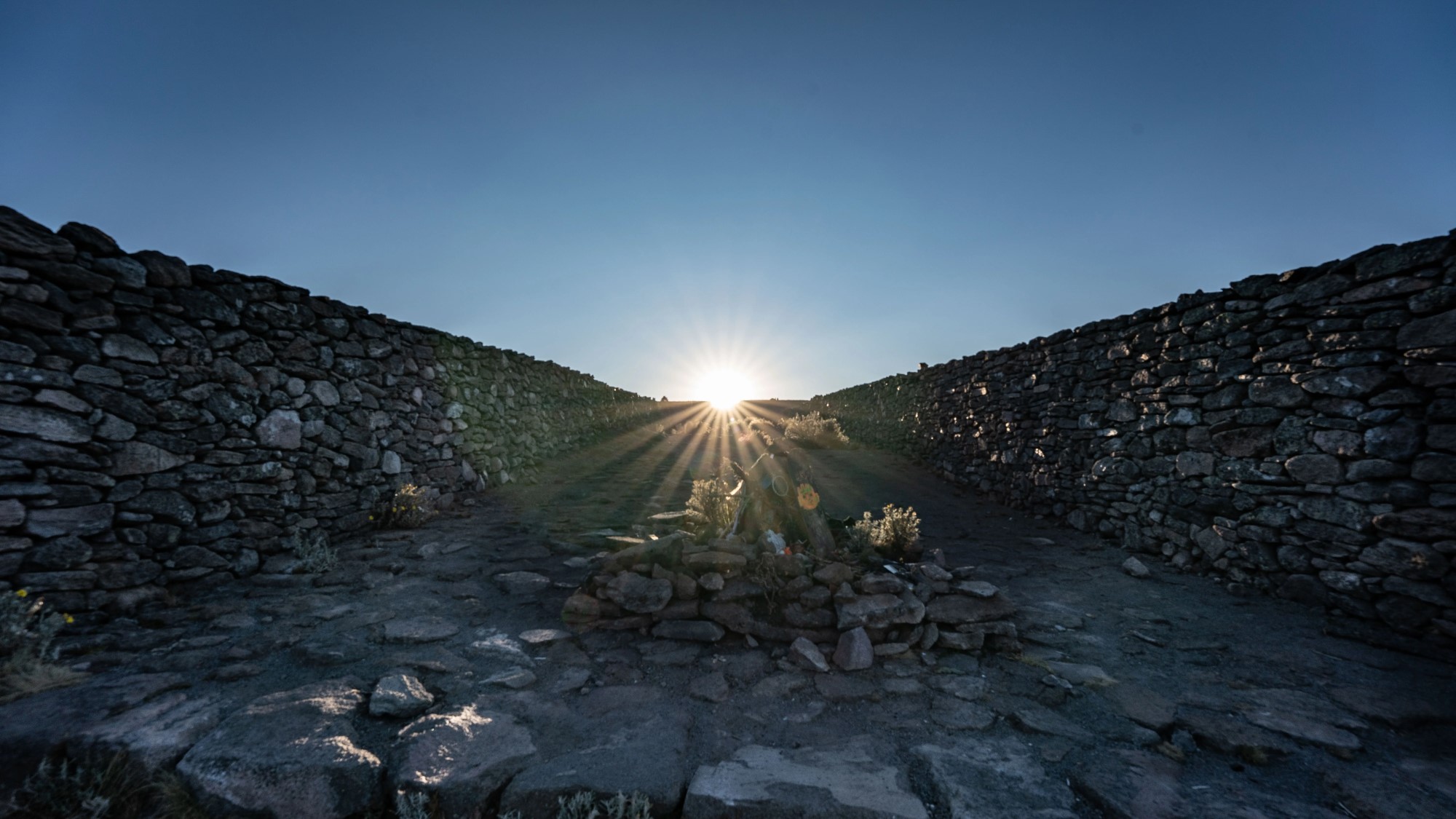Ancient Mexico's solar calendar in the mountains identified

Ancient Mexicans closely watching the sun from only a single location tracked the seasons and operated a farming calendar that fed millions.
The Mexica, or Aztecs, used the mountains located in the Basin of Mexico, now known as Mexico City, as a solar observatory. By keeping track of the sunrise against the peaks of the Sierra Nevada mountains, they achieved incredible accuracy in monitoring seasonal variations in weather, like dry springs and summer monsoons, and even accounting for leap years. Such precision was vital, as planting crops too early or too late could have been disastrous for the about 3 million people living in the Basin before the Spanish arrived in 1519.
"We concluded they must have stood at a single spot, looking eastwards from one day to another, to tell the time of year by watching the rising sun," Exequiel Ezcurra, an ecologist at the University of California, Riverside and lead author on the new research, said in a statement.
Related: Comet impact may have triggered decline of Ohio's Hopewell people 1,600 years ago
Ezcurra and his team set about finding this single spot by scouring Mexica manuscripts for references to such a location. The researchers found that these texts referred to Mount Tlaloc, which lies to the east of the Basin.
Exploring the high mountains around what is now Mexico City and a temple at the summit of Mount Tlaloc, and by using computer-based astronomy models, the researchers identified a long causeway at the temple that aligns with the rising sun on Feb. 24, which marked the beginning of the Mexica new year.
"Our hypothesis is that they used the whole Valley of Mexico. Their working instrument was the Basin itself," Ezcurra said. "When the sun rose at a landmark point behind the Sierras, they knew it was time to start planting."
Get the Space.com Newsletter
Breaking space news, the latest updates on rocket launches, skywatching events and more!
The study is the first to suggest that the Mexica kept time with the mountains as reference points while using the fact that the sun, when viewed from a fixed point on Earth, does not follow the same trajectory every day.
It also shows what the real time-keeping method used in ancient Mexico was — not the Sun Stone, which is often incorrectly described as the "Aztec calendar." The most famous example of Aztec sculpture, the Sun Stone was instead used solely for ritual and ceremonial purposes.
"It did not have any practical use as a celestial observatory," Ezcurra said of the Sun Stone. "Think of it as a monument, like Nelson's Column in Trafalgar Square or Lincoln's Memorial in Washington, D.C."
The study also demonstrates how a variety of methods can be used to understand the natural world.
"The Aztecs were just as good or better as the Europeans at keeping time, using their own methods," Ezcurra said. "The same goals can be achieved in different ways. It can be difficult to see that sometimes."
The ancient Aztec solar observatory may have a new function in the modern age, Ezcurra said. Although Mount Tlaloc is no longer needed for timekeeping, comparing images through the years shows how the forest is gradually advancing up the mountain's slopes, possibly as a result of an increase in average temperatures at lower elevations.
"In the 1940s, the tree line was way below the summit. Now there are trees growing in the summit itself," Ezcurra said. "What was an observatory for the ancients could also be an observatory for the 21st century, to understand global climate changes."
The team's research is described in a paper published Dec. 12 in the journal Proceedings of the National Academy of Sciences.
Follow us on Twitter @Spacedotcom or on Facebook.
Join our Space Forums to keep talking space on the latest missions, night sky and more! And if you have a news tip, correction or comment, let us know at: community@space.com.

Robert Lea is a science journalist in the U.K. whose articles have been published in Physics World, New Scientist, Astronomy Magazine, All About Space, Newsweek and ZME Science. He also writes about science communication for Elsevier and the European Journal of Physics. Rob holds a bachelor of science degree in physics and astronomy from the U.K.’s Open University. Follow him on Twitter @sciencef1rst.
-
Helio The referenced paper is interesting, as going deeper often does add to the story...Reply
"We also show that a long stone causeway in the summit of Mount Tlaloc aligns perfectly with the rising sun on February 23 to 24, in coincidence with the Basin’s new year in the Mexica calendar. Third, we demonstrate that, when viewed from the sacred Mount Tepeyac in the bottom of the Basin, sunrise aligns with Mount Tlaloc also on February 24."
Mt. Tlaloc is quite a site, apparently...
The causeway, though it may have been reconditioned, is interestng as well...









